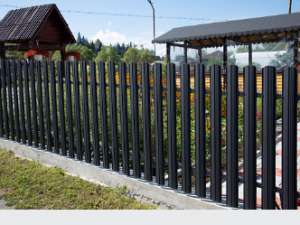The purpose of residential fences is to keep animals from entering your property. It prevents the stress and disturbance that animal attacks cause to your life. Not to mention, animals also leave behind trash that can ruin your home. When you want to avoid all these issues, you should install a quality residential fence. Here are some tips on installing a residential fence in your home. Listed below are some of their benefits. Read on to learn more.
 Responsibilities of a residential fence
Responsibilities of a residential fence
Who is responsible for the upkeep and maintenance of residential aldingahomeimprovements.com.au/ fencing Seaford? The fence owner is usually the property owner who purchased or acquired the property or the person who caused the fence to be erected. Therefore, it is essential to follow these rules when erecting a fence. When unsure who is responsible for the fence, consult the zoning regulations. Failure to adhere to these rules can result in the homeowners association filing a lawsuit against the property owner.
Residents in neighbouring properties should work out a mutual agreement if a fence is on the boundary line. In some cases, the owners of neighbouring properties can agree to split the repair costs. However, this agreement is only valid for the current neighbours. If one of them decides to sell the property, the neighbour has the right to sue for the damages. If a neighbour refuses to pay for repairs, the neighbour can sue for double the cost.
Requirements for building one
When constructing a fence around your property, you must understand the local zoning and building codes. Fences are large, visible structures that may affect the appearance and function of a city. While many fences are legal, there are restrictions on height, placement and other aspects of residential fencing. Moreover, some cities require buffer zones between structures. The city will also provide guidelines on the space between structures and your property.
Typically, residential fences are limited to 6 feet in height, although they can be built to a higher or lower height depending on the zoning codes in the area. Zoning codes will vary based on the height of the fence and its materials, but there are minimum requirements for height and material, as well as post-size and depth. Some cities also require that posts be set in concrete to prevent frost heave.
Materials used in residential fences
There are some different materials used for residential aldingahomeimprovements.com.au/ fencing Seaford. Some are wood, while others are made of plastic or composite materials. Wood fencing is a classic option, but it can catch fire easily and is also susceptible to pests and insects. When you want to save money while maintaining the look of your fence, consider composite fencing. Composite fencing costs significantly lower than wood, and you can recycle the material.
Cost of a residential fence
Chain link fences are the cheapest option, ranging from $5 to $15 per linear foot. Chain link fencing is typically available in four, five, and six-foot heights and comes in various colours. For example, a wood picket fence can cost anywhere from $5 to $15 per linear foot. Pressure-treated wood, cedar, and redwood are the most popular materials for this type of fence. They can also be stained in nearly any colour.
Permit requirements
Permit requirements for residential fences vary depending on your property. If you plan to install a fence between properties, ensure you know your neighbourhood’s zoning regulations. To make filing easier, you can use the DCA’s eFiling system to check if a contractor has a HIC license.